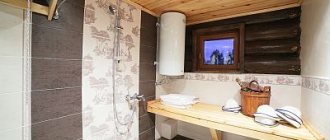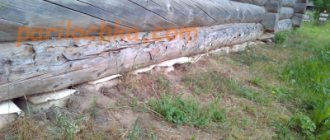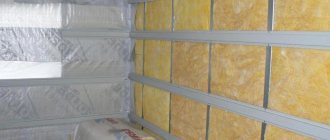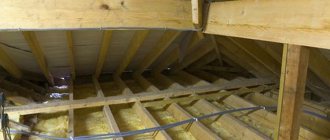Workflow Features
Puttying polyurethane foam can be divided into several important stages, where direct surface treatment takes only part of the time.
Selection of composition and tool
Before starting work, you need to prepare the necessary set of tools, which includes a knife, a container for the solution, two spatulas (wide and narrow) and work gloves. As for spatulas, the solution is taken out of the container with a narrow tool and applied to a wide one, which is used to treat the surface. A narrow spatula is also used to seal corners and hard-to-reach places.
In addition, you need to purchase a putty composition
When choosing it, you need to take into account the following circumstances:
- Location of treated surfaces. For work inside a building, certain compounds are needed, while for work with a facade or wet rooms, others are needed.
- Layer thickness and slot width. If surface defects are too deep, it may be better to plaster such cracks first. The fact is that the putty is designed to hide relatively small defects and is applied in a thin layer, but with the help of plaster you can seal recesses up to 15 centimeters deep.
Examples of reliable compositions for dry rooms include Rotband gypsum plaster and Fugenfüller putty. Moreover, the choice is far from limited to these mixtures. You just need to know the conditions under which the coating will be used and select the composition taking them into account. For example, mixtures based on cement or polymers are suitable for facades, and adhesive putties are suitable for tiles and thermal insulation boards.
The amount of the required mixture is determined depending on the area of the room and the consumption per square meter of the millimeter layer. Material consumption will be discussed in more detail below.
You also cannot do without a primer. The primer additionally protects the putty and ensures better adhesion of the coating to finishing materials. We can recommend the use of acrylic primer as it has the largest list of positive characteristics.
When it comes to finishing slopes, the joints of window frames and plaster will require an additional level of protection, since it is in these places that cracking usually appears. A paintable sealant can be used as a protective agent. The price of this product is not too high, but the benefits are very noticeable. The sealant is used simply: after applying the main composition (plaster, putty) to the surface, the finishing material is partially removed from the seam (3-4 millimeters from the edge). The sealant is poured into this cavity.
Preparing the base
This stage is especially important, since the final quality of the putty depends on the thoroughness of the preparation of the base.
Preparatory activities are as follows:
- Using a knife, remove all protruding pieces of foam. As a result, the surface should become smooth, without any obvious defects or depressions.
- If the coating does not adhere securely somewhere, it is better to remove it completely and replace it with cement mortar.
- We clean the surface from dirt and dust. You can use a vacuum cleaner for this operation.
- We prime the surface.
Applying putty
The work is performed in the following sequence:
- Mix the solution. The proportions of the components are indicated on the packaging. It is recommended to take a very prudent approach to determining the total volume of the batch. If there is too much solution and it hardens, it will not be possible to revive it with water, which means that the unused mass will simply have to be thrown away. The solution should be enough for about 30 minutes of work.
- Apply a starting layer of putty to the foam. If defects on the surface are noticeable after the first coat, an additional coat will have to be applied. The thickness of the layer depends on the type of putty (for example, for acrylic mixtures the maximum layer thickness is 3 millimeters).
- When the starting layer has dried, it is recommended to sand it and prime it.
- Finishing putty is applied to the dry surface. The dried layer is sanded again (with fine-grained sandpaper) and primed. Now the surface can be wallpapered or painted.
So, there is nothing special about puttying on foam that would distinguish this process from processing other types of surfaces. For a high-quality result, you only need strict adherence to the technological process in terms of surface preparation and applying putty.
Recommendations for use
If we talk about how to properly use polyurethane foam and how to work with it, then you need to clarify whether a gun is used or not. If you plan to carry out a full renovation of your home, you will have to use both professional and household foam to foam joints, seams, gaps, and install windows and doors.
You can install the gun on professional sealant as follows:
- First, the canister with the substance needs to be warmed up a little in warm water to 20-25 degrees. Then you need to shake it several times so that the substance becomes as homogeneous as possible and comes out of the can smoothly and easily.
- At the top of the gun, you need to remove the protective cover, then turn it with the handle down and screw on the can of sealant. You need to screw it in until a characteristic hissing sound appears, which will indicate the beginning of the substance entering the gun.
- If the gun is not new and has already been used, then it is necessary to inspect it before screwing in the can so that it is washed thoroughly. If after screwing in there is no hissing, then the gun is dirty and you need to buy a new one.
- Before starting to work with polyurethane foam, according to the rules, you need to shake the gun with the cylinder again, turn the adjusting screw ¼ turn and, holding the trigger, begin processing.
To work with a gun, there is no need to have any skills and abilities in the field of construction and installation work. Work is usually performed in the following sequence:
- The first step is to clean the surface where the sealant will be applied to remove dirt, and then moisten it with water from a spray bottle to ensure good adhesion.
2.Next, the gun nozzle must be directed at the surface to be treated, gently pull the trigger and apply the sealant in the required volume.
3.To fill a vertical gap, it is recommended to process it from the bottom up.
4.If the surface to be treated is wide, you need to fill it with zigzag movements, but no more than 1/3 of the volume, because the polyurethane foam will increase in size.
5.If there are any untreated areas left, they can be filled in later.
If it is necessary to perform treatment in remote areas, it is recommended to additionally purchase a special extension hose, since it is unlikely that it will be possible to foam hard-to-reach areas with foam without using it.
The can usually indicates how long it takes for the composition to harden. Despite the instructions, it is recommended to wait 10-12 hours. Once the sealant has completely cured, you can remove the excess using a knife or saw.
When using household sealant, there is no provision for a gun. It’s okay if the polyurethane foam comes without a gun, since you can use it with a straw. The tube is made of polymer materials - you just need to put it on the adapter. The work is performed in the same sequence as in the case of a gun, but when using a tube you will have to put in more effort.
You can easily use polyurethane foam without a gun if you have the appropriate tube. But in construction stores, sealant can be sold without a tube (cheap models), so you will have to purchase it separately
You should also pay special attention to this when choosing suitable polyurethane foam.
The use of a tube is relevant if a small amount of work is expected to be performed. It is recommended to use polyurethane foam with a tube if you need to fill joints, gaps, seams, or glue different materials. Household sealant is rarely used when constructing door and window structures or when treating large surfaces. For thermal insulation and sound insulation, you should also choose professional analogues.
On video: Using polyurethane foam without a gun.
How to foam correctly, foam cracks, joints and seams, large and not only
One of the important advantages of polyurethane compounds is ease and ease of use . Regardless of the type of cracks being filled, the work is carried out according to a similar principle. It is first necessary to prepare the surface , clean it from dust and dirt, old sealant (! how to clean polyurethane foam from metal doors, plastic windows, clothes and hands). The surface must be degreased with acetone and moistened with water from a spray bottle.
Soudal super-elastic all-season pistol foam 750 ml. Low expansion is excellent for filling cracks and voids. Photo by Leroy Merlin
It is necessary to prepare a container of foam, bring it to room temperature, shake it to mix all the components of the composition. If professional foam is used, the gun must be installed before shaking. To do this, the lid is removed from the container and the container is connected to the gun. The performer will need goggles, a mask or respirator, gloves, and long sleeves.
The container nozzle is placed in the gap to be sealed and moves from bottom to top. The cylinder must be positioned bottom up. The composition hardens for 30 minutes, after which the excess may be cut off with a construction knife. Wide and deep cracks are foamed in several layers. Other recommendations for learning how to lather are presented here.
On the ceiling
Sealing ceiling cracks can be a particularly difficult process . But there is a way out. The length of the plastic adapter tube for household ones or the nozzle of the gun for professional compounds must be increased using a PVC tube , it is also called a dropper tube. It has sufficient strength and excellent elasticity, and has a suitable bore diameter. One end of the tube is connected to a gun or adapter, the other is directed into the gap required for sealing. By gradually pressing the material consumption is controlled and sealing is carried out.
If the foam continues to fall out, then there is another way. After carrying out the preparatory work, it is necessary to seal the seam with masking tape, in which holes are formed, through which the gap is filled with foam. After the composition has hardened, the tape is removed.
Reference. Do not forget about the preparatory work, since a lack of adhesion may occur due to dust or dirt present on the surface.
The best recommendation for sealing cracks in the ceiling would be to purchase compounds that can be worked in different positions, not just bottom up, for example, Tytan Lexy.
In the floor and under the baseboard
Problems with flooring cause a lot of trouble for owners of apartments, houses, bathhouses and other buildings. Gaps in plank floors and under baseboards present a whole range of problems : an untidy appearance, the appearance of dampness, the formation of mold and mildew, and possible insect infestations. Therefore, it is necessary to get rid of gaps as quickly as possible. In this case, it is necessary to ensure good heat and sound insulation, and to prevent increases in humidity.
The culprits for the formation of cracks may be incorrect technology for laying boards, poor-quality fasteners and violation of the location of the joists, low humidity in the room, which leads to a reduction in the size of the products, low quality lumber, poorly organized ventilation, rodents, and active use of the coating.
Polyurethane foam TYTAN LEXY 20 300 ml. Photo by Maxidom
There are a significant number of ways to eliminate cracks . Using foam is an easy repair method. The polyurethane composition allows you to get rid of the defect and provides floor insulation. When performing work, it is necessary to adhere to general recommendations and follow the standard principle of action.
What else is not allowed when working with foam?
- spray near fire;
- you cannot smoke if you work with foam;
- It is not recommended to heat over a stove, gas, or fire. Warm up the foam to work only in hot water;
- work with foam when installed in a ventilated area, using personal protective equipment.
When using foam, the surface must be clean, free of dirt, dust and grease. We protect other places so that foam does not fly onto them and apply the product to the moistened area if the temperature is above zero degrees.
If the cylinder is cold, it needs to be heated in water to a temperature of 23 degrees, without using a stove. After this, shake the balloon and, holding the applicator down, apply it to 1/3 of the volume of the gap. There is no need to spray completely; the foam will fill the space itself.
Precautionary measures
Caution certainly won’t hurt, but it will save you from a number of problems. I recommend always using polyurethane foam in protective equipment. I have gloves and a respirator. Do not spray near an open fire, much less heat a frozen container over an open fire.
If the foam has slightly frozen and the balloon refuses to work, you can do this - pour warm (not hot) water into a basin, place the balloon in it, previously closed in a plastic bag. Leave for 15-20 minutes.
And one more life hack from me - for removing residual foam. If the craftsmen and specialists have already gotten the hang of working with it, then I have mistakes, as a result, the foam ends up in the wrong places. Needs to be removed. I always wait time for the product to harden. Afterwards, I carefully cut off most of it with a knife, trying not to damage the surface. But the remains are perfectly dissolved by the drug Dimexide. It is sold in pharmacies, costs a penny, and does not require a doctor's prescription. Apply a small amount to a clean soft cloth and apply to the foam for 5-7 minutes. After a while, it easily comes off the surface, leaving no stains.
I hope the article will save those who were thinking of using polyurethane foam in the bathhouse. But after that I chose a safe and construction material.
Don't forget
to subscribe to our channel and hit the thumbs up. We will be pleased)
Is it possible to use foam in a bath or not?
In terms of its chemical composition, polyurethane foam is a polyurethane foam sealant produced in aerosol packaging, inside which the polymer is in a liquid state. There is also a propellant gas in the cylinder. By thoroughly shaking the contents of the can, you get a foamy mass that approximately triples in volume and hardens after application to any surface.
The main property of polyurethane foam is that it fills all hard-to-reach cavities and joints
Easy-to-use polyurethane foam has high sound and heat insulation properties. It is unacceptable for this material to come into contact with ultraviolet radiation, from which its strength and hardness are lost.
Before answering the question: which is better, it is necessary to provide a list of requirements for insulating material for a wooden house:
- Vapor permeability, i.e. the material must freely pass through itself water vapor that forms in a warm house. If the material does not have this property, moisture is retained in the insulation without coming out. As a result, the heat insulator gets wet, the wood becomes damp and begins to rot.
- Moisture resistance. This characteristic indicates that the insulation does not accumulate moisture.
- Resistance to microorganisms and fungi.
- Breathability. The material must allow air to pass through well.
Since the caulking process is very labor-intensive, many are trying to find other easier ways to seal the seams between the beams. One option is to foam the joints with polyurethane foam. Let's figure out whether this can be done and how effective this method is.
The material has excellent performance characteristics:
- high heat and sound insulating properties;
- moisture resistance;
- non-flammability;
- ability to densely fill voids and cracks.
In addition, the big advantage of polyurethane foam is its simple and quick installation and inexpensive price. For this work it is not necessary to hire installers; it can easily be done independently. It is these indicators that, first of all, those who have made their choice in favor of this insulation are guided by.
We invite you to read: Construction of a bathhouse from blocks, step-by-step instructions
However, foam cannot provide a home with reliable and high-quality thermal insulation because:
- does not have sufficient elasticity, which leads to the formation of cracks and crevices when the timber moves during shrinkage;
- when heated strongly, it releases harmful toxins;
- cracks and collapses under the influence of UV rays;
- wood is a breathable material, foam does not allow air to pass through, it simply clogs the pores in the wood and deprives it of natural air exchange;
- Moisture can accumulate at the junction of the foam and the timber, which leads to rotting of the wood.
As you can see, the list of shortcomings is quite wide, which limits the scope of its application.
Foam can only be used when the façade is intended to be covered with decorative material. Under these conditions, ultraviolet radiation will not have a detrimental effect on the material. But you need to take into account that the work should be carried out before finishing, and also that with this method of sealing joints, the environmental friendliness of the wooden house will be compromised.
With great reservations, you can foam cracks and roof joints in wooden houses only if this option is considered as a temporary measure.
Use in the steam room
Instructions for using fire-resistant polyurethane foam state that the material can withstand ambient temperatures in the range from -60°C to 100°C
Among the properties of fire-resistant foam, there is one more thing that is important for use in a bathhouse: resistance to moisture and mold formation
According to all the characteristics, polyurethane foam can be used in a steam room, but only of the fire-resistant type. Those who equip a bathhouse and steam room should understand that polyurethane foam is a synthetic material, the use of which in a room with natural, environmentally friendly logs, boards, and stone is possible for technical reasons, but undesirable.
Polyurethane foam is best suited for sealing gaps measuring 1–8 cm
It’s another matter when polyurethane foam is used to install external doors, seal cracks in the locker room and other rooms where there is no heat and steam.
We suggest you familiarize yourself with: Buy wood-burning sauna stoves with a water tank
Professional services
Experts do not recommend using foam to insulate a wooden house and bathhouse. Although caulking inter-crown joints is a more complex and time-consuming job, it guarantees good and reliable thermal insulation, provided that the work is carried out efficiently and professionally.
If you are attracted to new technologies and want your home to look modern and stylish, we suggest using the service of sealing log seams with sealant. This material is specially designed for insulating seams between logs and beams and provides a reliable and elastic connection.
The craftsmen of our company work carefully and accurately, strictly observing technology. Our specialists are highly qualified, have the necessary skills and extensive experience. You can entrust us with home insulation work of any complexity and volume.
To contact us, use the information posted on the “Contacts” page.
Calculate the cost of painting and insulating your home right now
Select types of work:
Sandblasting Sanding with machines Warm seam Painting Additional. work
Select materials:
Ramsauer sealant Remmers sealant Gnature or Biofa oil Remmers oil Adler oil Other
Types of foam guns
Guns for working with mounting sealant are classified into two types - professional and household. Household appliances are often sold together with cylinders of polyurethane foam, and they are intended for one-time use. They are made of plastic or polyethylene, which allows foam to escape from the container. Household foam guns are used exclusively for ordinary cans that are not intended for use with professional equipment.
The advantage of household pistols is that they cost pennies. After use, they cannot be cleaned to be reused. In addition, if you start using polyurethane foam, it should be used up within 20-30 minutes. If this is not done, the gun nozzle will become clogged with the drying polyurethane compound, and it will be impossible to continue working with it.
This is interesting!
Many people do not know that if they start using household foam, they should use it entirely.
You cannot leave a started container for storage, as the foam will dry out inside. It is also impossible to store a container of foam for a long time, which will lead to the loss of its technical properties. The most common case of long-term storage of a foam container is a decrease in the volume of polyurethane liquid. Professional guns for polyurethane foam are the devices discussed in the material. The main advantage of such devices is that they are reusable. But first things first:
Material of manufacture - to create professional guns for working with polyurethane foam, metal and plastic are used. Moreover, cheap versions of devices are made from cheap materials, while expensive ones involve the use of high-quality metal and impact-resistant plastic. Disassembly ability - in order for the tool to be reused, the internal parts should be cleaned after use. For this purpose, the device is made dismountable, which allows, if necessary, to disassemble it in order to clean or replace faulty parts. To clean the foam composition inside the gun, you will need special dissolving liquids. However, such liquids are powerless if the polyurethane composition has dried out. They are used for working with special cylinders
To operate a foam spray gun, it is important to consider the selection of the appropriate cylinder. They differ from a regular cylinder for a household gun in the presence of a threaded adapter
Using this threaded adapter, the cylinder is fixed to the gun adapter, ensuring a tight connection
Knowing the differences between the types of foam guns, you should understand in which case it is recommended to choose the appropriate options.
- To perform one-time work on blowing out cracks in walls or other structures, it is recommended to choose cylinders with polyurethane foam and disposable guns. After the cylinder is used up, it should be disposed of along with the plastic tool.
- If it is necessary to install a window frame, carry out sealing, insulation and other types of manipulations, then you should choose cylinders with polyurethane foam for professional guns. The use of a special tool affects not only the convenience of work, but also the efficient and economical use of material
When the main differences between household (disposable) and professional devices for working with polyurethane foam are known, an appropriate decision should be made - which is better to use in a particular case.
This is interesting!
Despite the significant differences between the types of mounting guns, they are affordable for everyone. The cost of professional devices for foam ranges from 500 rubles to 3000 rubles.
Criterias of choice
Polyurethane foam is usually used to fill cracks with a width of no more than 100 and no less than 10 mm . It is recommended to use sealants to seal small gaps. Not every mounting foam is suitable for filling voids. Materials have different coefficients of primary and secondary expansion. Maximum expansion compounds are not suitable for filling small gaps. Since when the volume increases, the foam puts pressure on the structure and/or its individual elements, which can lead to deformation. Therefore, it is important to take these indicators into account.
Axton professional mounting foam, 750 ml. Photo by Leroy Merlin
Professional compounds are characterized by high primary and minimal secondary expansion , so they are the best option. In addition, the use of a gun allows you to regulate and dose the speed, quantity and consumption of the composition when performing work. However, household foams are produced in small-volume cylinders , sold at a more affordable price. One cylinder with a volume of 300 ml. enough to install one door block. Depending on the scale of future work, the optimal option in terms of price and properties is selected.
When performing work indoors, it is recommended to use all-season or summer compounds. The selection of products for outdoor work must be carried out in accordance with the ambient temperature. Summer foam is used at temperatures from +5 to +30-35 degrees Celsius. The special formula of winter products allows the mass to harden even at subzero temperatures. All-season suitable for use at temperatures from -10 to +30 degrees.
An important indicator when choosing is the foam yield : 30 liters will be enough to install one door, to foam two window frames you need 40-45 liters, 50-55 liters. enough for two door frames.
Household mounting foam Makroflex 500 ml. SHAKETEC is suitable for filling cracks. Photo by Maxidom
Thus, for sealing cracks, it is necessary to choose products with low secondary expansion and in small volume cylinders that meet the requirements of the work being performed. When carrying out the work yourself, it is possible to use both household and professional materials.
It is also possible to note other characteristics that must be taken into account when choosing foam, regardless of the type of work performed:
- manufacturer (trade mark) , the use of products from well-known companies contributes to obtaining a high-quality result: Soudal, Makroflex, Tytan, TECHNONICOL; the range of leading companies includes materials to solve any problem;
- purpose , there are products on sale for indoor work and universal compositions suitable for various conditions;
- flammability class , depending on fire safety requirements, compositions of type B1 (fire-resistant), B2 (self-extinguishing) and B3 (flammable) can be used;
- polymerization time , to complete chemical reactions, compositions of various types require an average of 24 hours, carrying out work in ideal environmental conditions in terms of temperature and humidity, complete polymerization occurs within 12 hours, the maximum is 30 hours.
Brief information about the material
In terms of its chemical composition, polyurethane foam is a polyurethane foam sealant produced in aerosol packaging, inside which the polymer is in a liquid state. There is also a propellant gas in the cylinder. By thoroughly shaking the contents of the can, you get a foamy mass that approximately triples in volume and hardens after application to any surface.
The main property of polyurethane foam is that it fills all hard-to-reach cavities and joints
Easy-to-use polyurethane foam has high sound and heat insulation properties. It is unacceptable for this material to come into contact with ultraviolet radiation, from which its strength and hardness are lost.
Installation foam is a flammable material that can easily ignite
Therefore, it must be used very carefully. When using the material, be sure to remember the following warnings from the manufacturers:
- it is forbidden to spray foam near fire;
- When working with installation foam, smoking is prohibited;
- it is forbidden to heat the foam over an electric or gas stove, or a fire;
- It is recommended to use only hot water to heat it;
- You need to work with foam in ventilated rooms, protecting your hands with gloves and your respiratory tract with a mask.
Foam for installation consists of diphenylmethane diisocyanate, freon, pentane and other substances that form polyurethane foam. Therefore, it is used for construction, sealing blocks of windows and doors, insulating pipes carrying water, sealing cracks and seams, insulating walls, roofs, and floors. Sometimes foam is used in the construction of a bathhouse.
Since polyurethane foam is produced in cans with pressure inside, it must be used carefully, according to the instructions. Foam for installation has a negative effect on the human body
The substances that make up the foam can provoke allergies, asthmatic reactions, affect the respiratory system, and suppress the immune system. Therefore, foam should be used carefully, following all safety rules.
Foam for installation has a negative effect on the human body. The substances that make up the foam can provoke allergies, asthmatic reactions, affect the respiratory system, and suppress the immune system. Therefore, foam should be used carefully, following all safety rules.
Foam is dangerous when heated, since in this case it emits harmful substances. Therefore, it is not recommended to be used for finishing the inside of a sauna or bathhouse. Otherwise, vacationers will breathe chemical fumes and may get severe poisoning.
Is it possible to insulate walls with foam?
It is widely used for insulating walls outside and inside. Apply using a special apparatus or a pistol. The material fits well on vertical, horizontal and inclined surfaces. Features of wall insulation:
- The walls become thicker, which leads to greater resistance from environmental influences.
- The material can withstand temperatures up to +80.
- Vapor permeability.
- Resistant to various damages. It will not crumble from impact or become deformed.
- The material does not burn.
The following objects are insulated:
- window openings;
- walls from the street;
- foundation;
- balcony, attic;
- pipelines;
- attic spaces.
After application there are no seams or joints. The foam hardens in 1 to 3 days, depending on the number of layers applied.
Inside
Warming indoors is carried out as a last resort. Only when it is not possible to carry out work, if the apartment is on the upper floors. This is indicated in SNiP 23-101-2004. When insulating walls indoors, you should take care of waterproofing, because the dew point shifts. The walls will be wet, which will lead to the appearance of fungus and destruction of the supporting structure.
Outside
Insulating the outside is the right solution. The main factor is not the violation of the dew point. The walls will be warm and dry.
Benefits of insulating from the outside:
- High energy saving data.
- Inside, the footage remains the same.
- No condensation.
- Sound insulation performance improves.
Disadvantage: foam insulation requires the use of equipment.
Even with the inflated cost of the materials, the equipment used, and the work of the craftsmen, this pays off in savings (payment for heat), silence, and comfort.
https://youtube.com/watch?v=MHvW5_16d0k
How to insulate a bathhouse with your own hands
A detailed analysis of how and with what you can insulate a bathhouse, which side is better (inside or outside), where to start and how to finish.
1. From the position of the location of the insulation
External insulation of the bathhouse. When insulating a house, basement or garage, it has been proven that placing insulating material outside will be more effective. This allows you to protect the material from which the bathhouse is built. The roof of the bathhouse (attic) must be insulated if it is a separate building.
Insulation of the bathhouse from the inside. The operating mode of the bathhouse is such that external insulation alone, with all its advantages, cannot be done. Moreover, in different rooms of the bathhouse it is necessary to maintain its own microclimate, humidity level and set temperature. Therefore, they begin to insulate the bathhouse from the inside. Moreover, suitable materials are chosen for each room, which in turn influence the choice of installation technology.
2. From the perspective of the heat-insulating material used
There are different types of insulation materials available on the domestic construction market. Do not forget that a bathhouse can provide a healing effect only if natural and safe thermal insulation materials are used indoors.
Installation of a metal bath door
An iron door is, of course, heavier than any other. Therefore, it should definitely be placed on anchor bolts.
Such doors are purchased, so installation instructions will be included with them. It is not much different from the one described above, it’s just less work - the hinges are already ready, the holes are made in the box. You just need to screw it to the opening and foam it.
If difficulties arise, you can watch a video in which the author goes through all the stages of installing a metal front door together with the audience:
What else is not allowed when working with foam?
- the foam cannot be heated, because it begins to release harmful substances that negatively affect the body;
- The composition contains substances that can cause allergies, asthma, and reduce immunity, so it must be applied using protective equipment and rubber gloves. After hardening, if the foam is not heated, it does not pose a danger;
- When used outside, if the foam is covered with planks or plaster when filling voids around a door or window frame, it is not harmful. But it is not suitable for interior decoration of the steam room, so it is better to use moss. Foam does not like moisture, which also makes it unsuitable for insulating a structure such as a bathhouse. When it comes into contact with moisture, the wood underneath begins to rot, which means the service life of the bathhouse will sharply decrease;
- in construction, the foam on top must be covered with plaster or cement, which cannot be done in a bathhouse. Even if the bathhouse is lined with clapboard, it allows for a gap to allow the room to breathe. Otherwise, the wood will quickly rot and spoil the ecological balance inside the steam room.
Therefore, it is prohibited to use foam in the steam room, since the room is built for human health and must be environmentally friendly.
- spray near fire;
- you cannot smoke if you work with foam;
- It is not recommended to heat over a stove, gas, or fire. Warm up the foam to work only in hot water;
- work with foam when installed in a ventilated area, using personal protective equipment.
When using foam, the surface must be clean, free of dirt, dust and grease. We protect other places so that foam does not fly onto them and apply the product to the moistened area if the temperature is above zero degrees.
If the cylinder is cold, it needs to be heated in water to a temperature of 23 degrees, without using a stove. After this, shake the balloon and, holding the applicator down, apply it to 1/3 of the volume of the gap. There is no need to spray completely; the foam will fill the space itself.
Since the caulking process is very labor-intensive, many are trying to find other easier ways to seal the seams between the beams. One option is to foam the joints with polyurethane foam. Let's figure out whether this can be done and how effective this method is.
The material has excellent performance characteristics:
- high heat and sound insulating properties;
- moisture resistance;
- non-flammability;
- ability to densely fill voids and cracks.
In addition, the big advantage of polyurethane foam is its simple and quick installation and inexpensive price. For this work it is not necessary to hire installers; it can easily be done independently. It is these indicators that, first of all, those who have made their choice in favor of this insulation are guided by.
However, foam cannot provide a home with reliable and high-quality thermal insulation because:
- does not have sufficient elasticity, which leads to the formation of cracks and crevices when the timber moves during shrinkage;
- when heated strongly, it releases harmful toxins;
- cracks and collapses under the influence of UV rays;
- wood is a breathable material, foam does not allow air to pass through, it simply clogs the pores in the wood and deprives it of natural air exchange;
- Moisture can accumulate at the junction of the foam and the timber, which leads to rotting of the wood.
As you can see, the list of shortcomings is quite wide, which limits the scope of its application.
Foam can only be used when the façade is intended to be covered with decorative material. Under these conditions, ultraviolet radiation will not have a detrimental effect on the material. But you need to take into account that the work should be carried out before finishing, and also that with this method of sealing joints, the environmental friendliness of the wooden house will be compromised.
With great reservations, you can foam cracks and roof joints in wooden houses only if this option is considered as a temporary measure.
Advantages and disadvantages of caulking
The log house is caulked only with natural materials: moss, jute, tow, flax.
- do not violate the environmental friendliness of a wooden house;
- do not interfere with the air exchange of wood;
- They retain heat well in the house because they have low thermal conductivity.
A log house, caulked in the classical way, looks very expressive; the color of a traditional Russian hut is preserved in the house. Additionally, the crown seams are decorated with jute tape or cord, and a rope or decorative cord is laid between the logs. This not only improves the appearance of the house, but also improves its thermal insulation.
Firstly, it is a long and tedious job that requires a lot of effort and patience. It is very important to have experience and work skills. Even a non-specialist can caulk logs. However, there are many nuances. If the seams and joints are caulked incorrectly, the house may become distorted, the insulation may be pulled apart by birds, or it will be knocked out during shrinkage. Every problem has its own solution, which only professionals know.
Secondly, caulking is done several times. This work cannot be done once and for all. The primary one is performed during the construction phase or immediately after its completion. The log house is caulked the second time after the main shrinkage has passed, the work is done both outside and inside. If the exterior finishing has not been done, then a third caulking is done 3-5 years after the construction of the house. In some cases it is necessary to perform intermediate caulking.
You need to take the choice of the material itself very seriously. Typically, loose insulation (moss, tow) is used at the construction stage. To re-caulk, take a more durable material, which should fit tightly into the grooves, without the formation of cracks. Jute and linen wool are great here.
It should also be taken into account that only moss, and to a lesser extent tow, has good antibacterial properties. The remaining insulation materials must be treated with special compounds. On the other hand, tow tends to accumulate moisture, so it is advisable to use it to caulk areas that are least exposed to the influence of natural precipitation. Birds love to take away natural insulation materials, so you will also have to take care of protecting the material.
High temperature in the bath
We can say that a bathhouse is a hot room with high humidity - due to steam. But you can’t heat the polyurethane foam. Against the background of high temperatures and humidity, toxic substances are released, which lead to a number of negative health consequences - loss of strength, general malaise.
Bronchial asthma or an allergic reaction, including angioedema or anaphylactic shock, may develop. And the last two conditions, in the absence of timely help, are fraught with death!
The foam glued to the wood prevents normal drying. Therefore, if you use it in a bathhouse, the likelihood of developing fungal infection and mold increases to one hundred percent.
Under normal conditions, polyurethane foam is a completely safe product. But constant heating changes the chemical properties, which is fraught with serious problems with both structure and health.
What can be replaced
You can seal the joints between logs and timber inside the steam room using:
Finishing in the bathhouse is appropriate in the form of wooden paneling . Here is the answer to the question, is it possible to use polyurethane foam in a steam room? In principle, it is possible, but is it necessary?
Polyurethane foam is used to seal various holes in walls, window and door frames. When the question arises whether polyurethane foam can be used in a steam room, it is important to study what benefits it has and whether it can harm human health. What material can it be replaced for finishing the steam room?
Polyurethane foam is a flammable material











